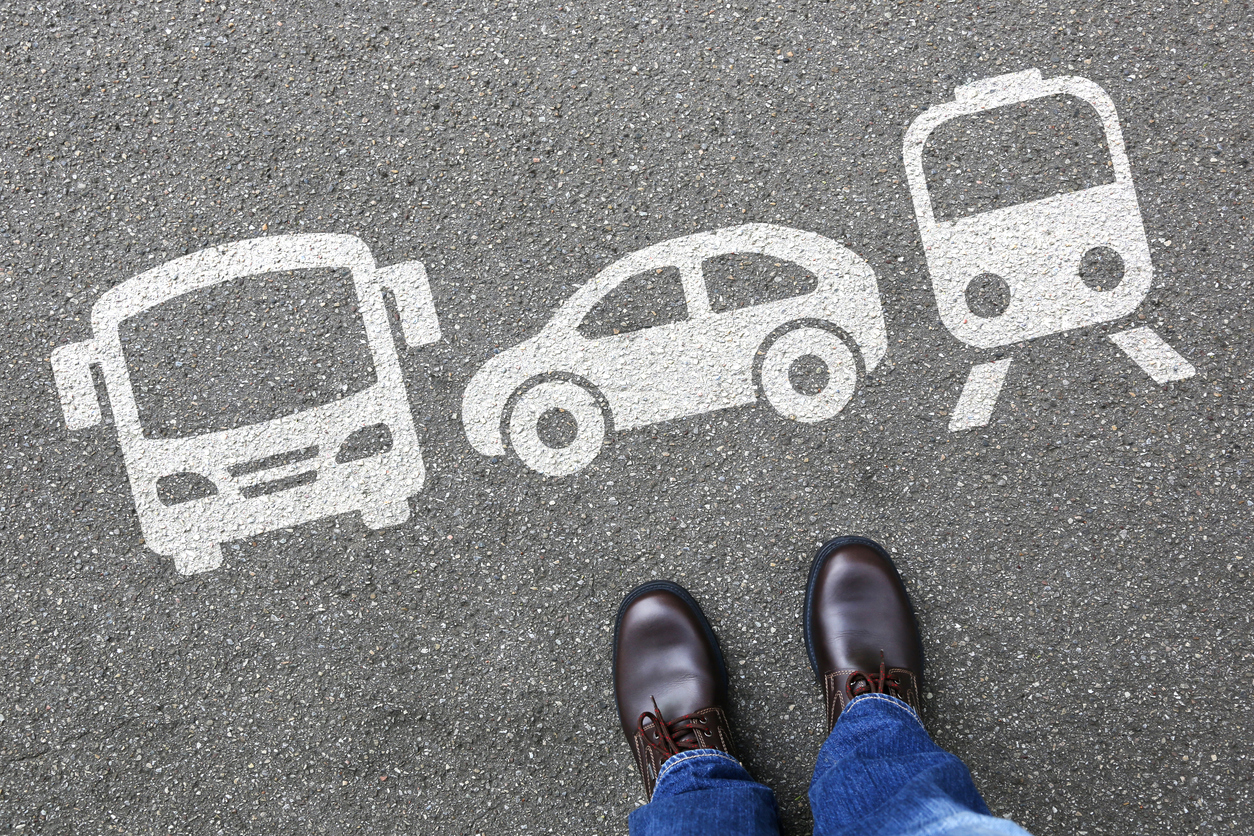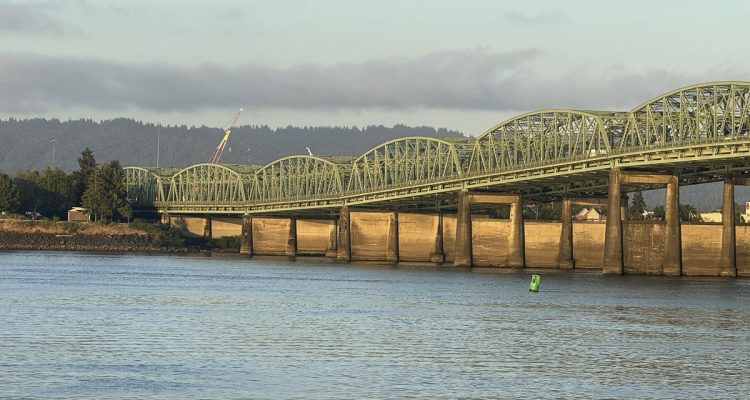In a recent blog, WSDOT reported that support for I-405 express toll lanes (ETLs) is growing. The blog leans on two specific results from a public online opinion survey WSDOT conducted last June of 416 people:
- “60% of people told us that they like having the option to use the express toll lanes for a faster trip.”
- “Two-thirds [64%] of those surveyed agree that the express toll lanes help reduce congestion in the regular lanes.”
WSDOT acknowledges at the end of the blog that “only a third of people agreed that tolls are an effective way to reduce congestion.”
I requested the complete survey from WSDOT, and would like to highlight a few other results that the agency did not cover in its blog.
- When asked about the top contributors to congestion on major roadways, the top two contributors were “too many drivers (54%) and not enough lanes (35%).” When asked about congestion specifically on I-405, the results weren’t that different, with 53% saying too many drivers and 32% saying not enough lanes.
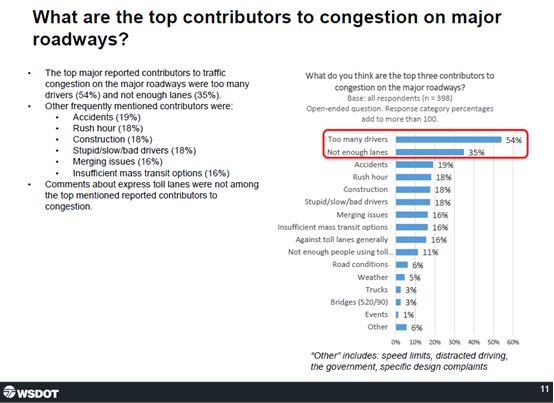

- When asked how they traveled on I-405 between Bellevue and Lynnwood in the past week, 56% of users drove alone and 54% carpooled with household and non-household members.
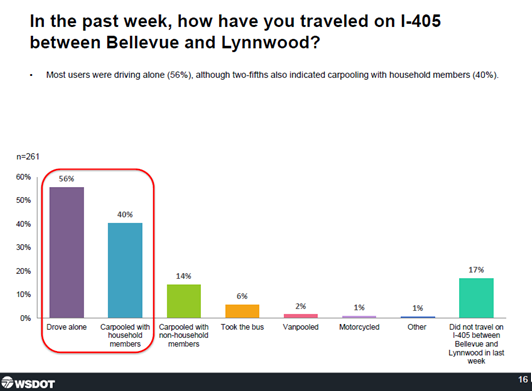
- Although 60% of people did note they like having the option of using express toll lanes, 64% of people rarely (46%) or never (18%) actually use them during tolling hours.
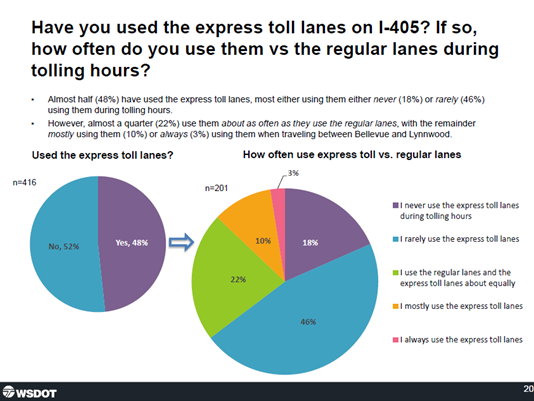
- Drivers who choose to use the regular lanes rather than the express toll lanes do so because of three top reasons: the toll lanes are not worth the price (54%), they don’t agree with paying a toll (40%), and/or they don’t have enough passengers in their vehicle to carpool for free (34%).
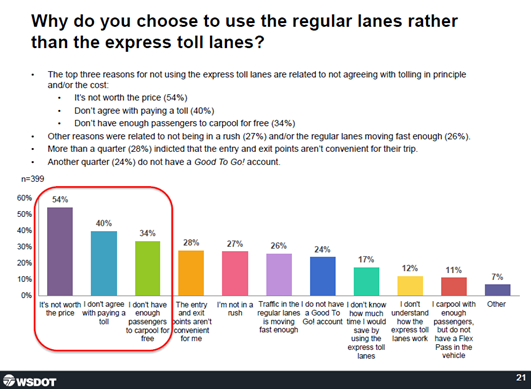

- Of 89% of people who “know,” which represents about 370 respondents, 191 (52%) said that WSDOT is a somewhat or not at all reliable source of information about the effectiveness of toll lanes. About 174 (47%) said that WSDOT is mostly or very reliable. WSDOT described the results with a more positive spin, saying that 75% of respondents “rated WSDOT as being at least a somewhat reliable source of information about the effectiveness of toll lanes.”
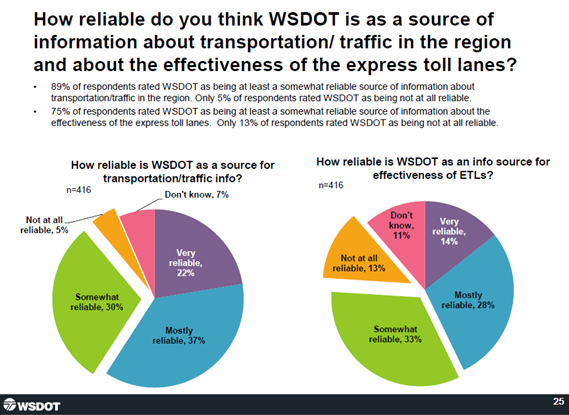
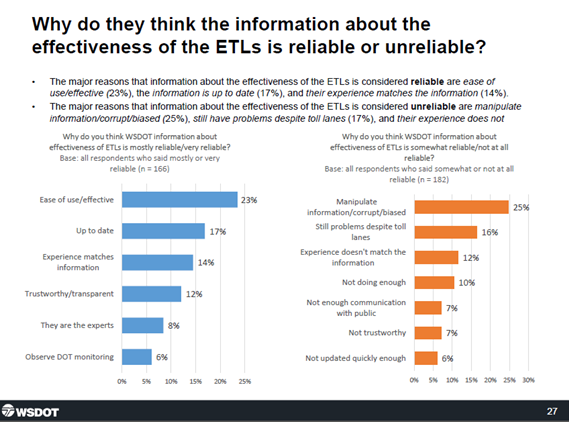
- Given a series of statements with which respondents could agree or disagree on a scale, 64% at least somewhat agreed that express toll lanes reduce congestion for some trips in the regular lanes. Respondents largely agreed with most of the statements WSDOT provided, with the exception of “they benefit people of all incomes.” Nearly three-quarters (71%) disagreed that express toll lanes benefit people of all incomes.
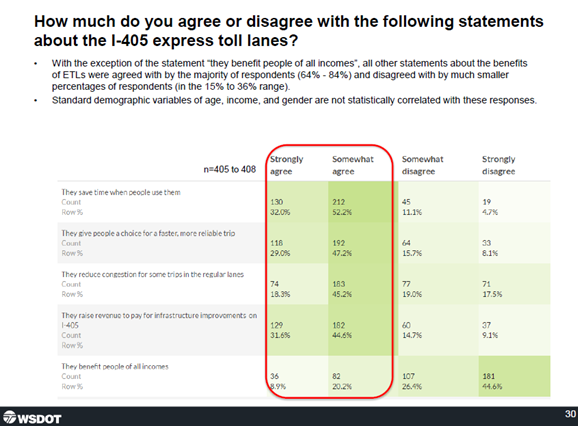
- In their blog, WSDOT acknowledged that only one-third (33%) of respondents said that tolling is an effective strategy in reducing congestion. What they did not share is that 88% said adding regular lanes in both directions, or having untolled express lanes that change direction like those on I-5 (81%), are more effective strategies in reducing traffic congestion. Adding regular lane capacity seems to be the last thing WSDOT officials would want to do. On their website, WSDOT officials continue to insist “we can’t build our way out of congestion,” even though they get to collect the second highest gas tax in the nation from drivers who want capacity and congestion relief in return.
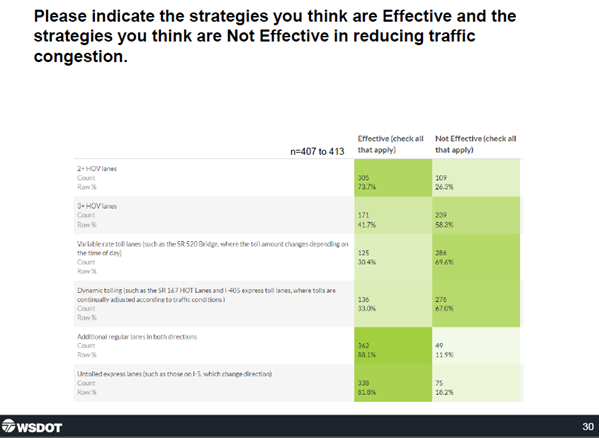
According to WSDOT, the purpose of the survey was to “hear from I-405 users and learn why this disconnect exists between public perception and WSDOT’s traffic data.” Based on these survey results and WSDOT’s subsequent blog about them, it seems that at least part of the problem is lack of trust.
As I said just last week, one way to begin restoring public trust is by listening and responding to what the public wants, rather than using these surveys to make a case for what government prefers instead.





